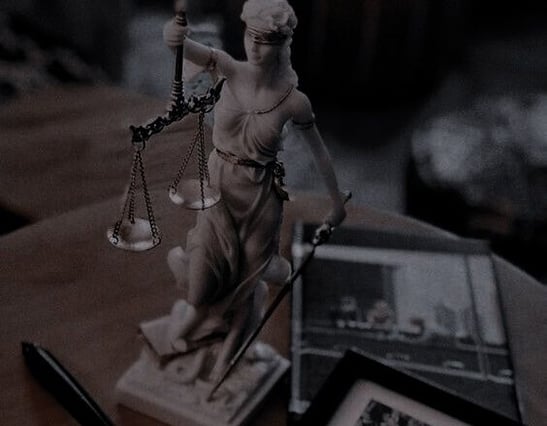
What’s with The Judicial System’s Uncanny Resemblance to the Popularity Hierarchy?
WRITEUP
Mantrana Mahi Aggarwal
4/18/20242 min read


Comparing countries to school was fun, but it’s time to compare the popularity hierarchy to something else- the judicial system. The high school hierarchy is something out of go through. We see it through different aspects and have different experiences but the fact that this system spirals into and has far reaching ramifications in almost every field or maybe I’m just overthinking, but well here we go.
When something is the centre of attraction, everyone’s talking about it. Sometimes the chatter dies down- other times it simply doesn’t. The “doesn’t” are the ones that matter and this is clearly seen in the case of the judiciary. Some cases receive a lot of media attention and they shake the country. These are the cases that come on the first page of the newspaper- they’re chilling and make you doubt everything and everyone. The Jessica Lal murder case and Nirbhaya are sheer examples of these cases. From swayingopinions to demanding verdicts without a trial, the media plays a major role when it comes to spreading awareness. Yet out of the million cases, the media focuses on cases only when they become controversial. Do you honestly think that if every case was given a good amount of media attention, the judicial system would be faster?
Well that could be potentially harmful. While it would ensure the speed train is on, the Amber Heard and Johnny Depp case is a prime example of too much attention. No one likes too much attention and when the media goes overboard which it does, the case itself is lost. For example, the umpteen memes generated from the Depp Vs. Heard case would make you forget that it’s a defamation case which has already been fought once in the UK. So while too much attention is potentially bad and can be misused immensely, it’s not a sure shot strategy for justice being dispensed.
You know how people who’re typically popular or silent just seem to get away with things? That’s exactly the case with the judiciary too. Even in these highly publicised cases, the major component seems resolved but what about the minute ones? The main suspect gets a verdict but when it comes to the allies the cases are still pending. Shocker right? This is the case in numerous cases- the Jessica Lal case being a major example. The media attention is always centered around the forerunners, not their allies and as a result, the case remains unsolved and closed even decades later.
So the hierarchy presents itself in two folds. One when it comes to the case that is broadcasted and secondly in the way the case unfolds. What’s popular draws attention and what isn’t simply remains at the sidelines, only to be forgotten and become a fading splotch on the fabric of justice.

